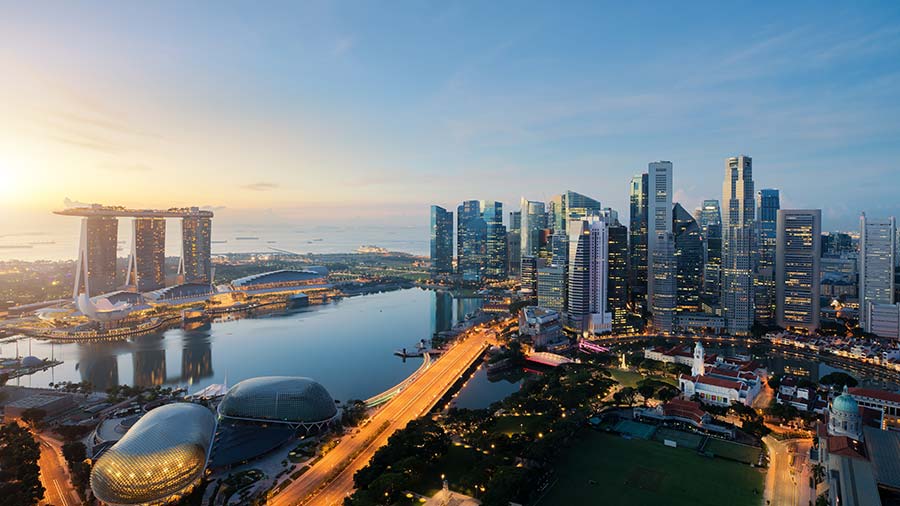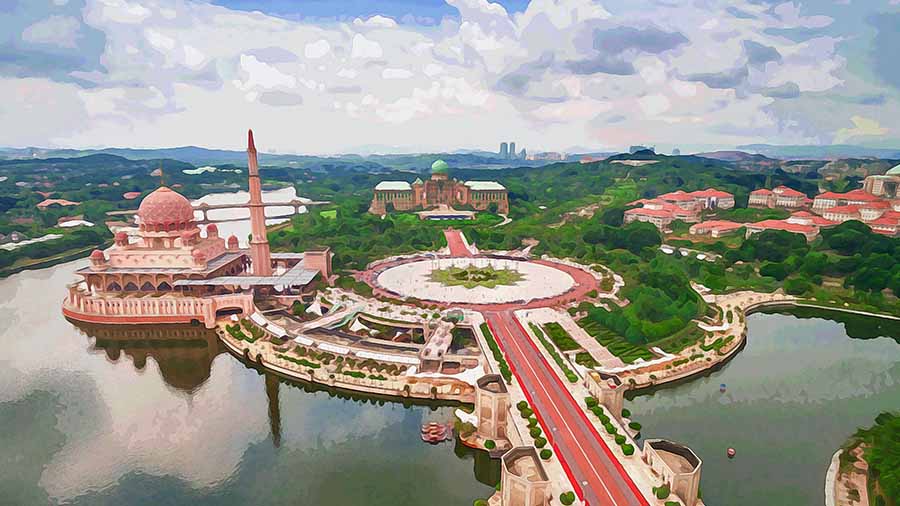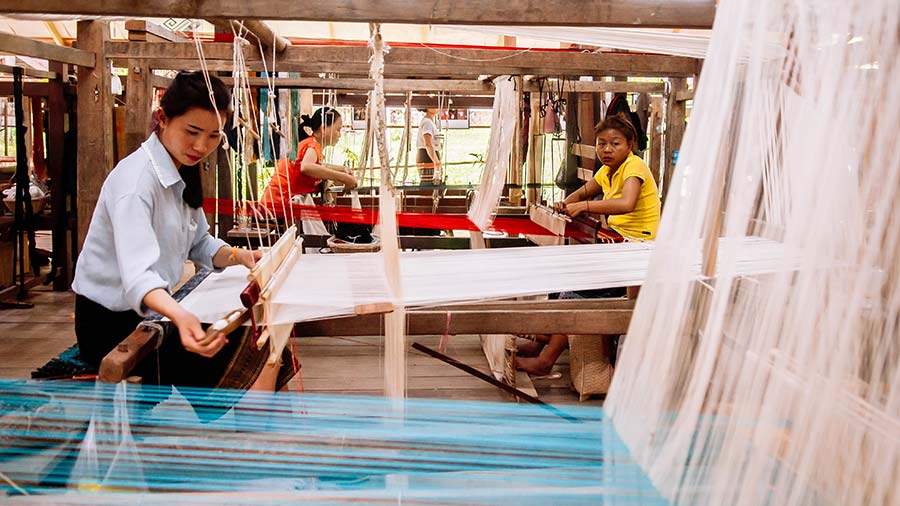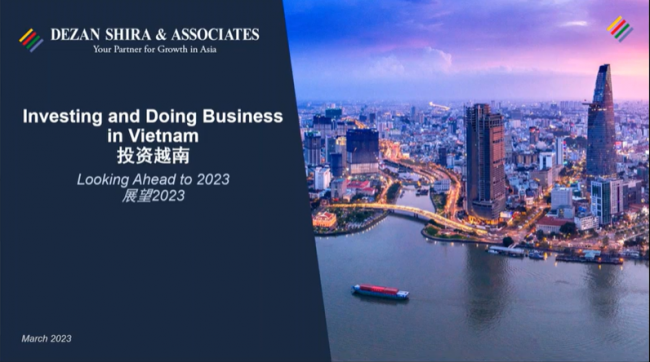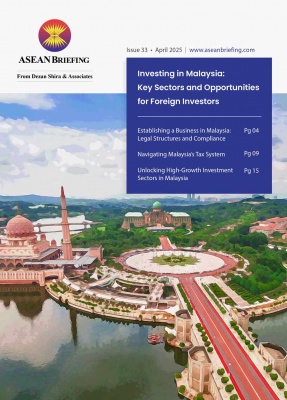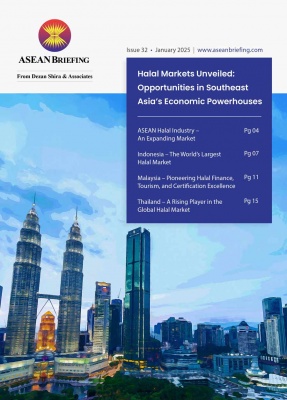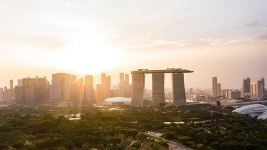Northern Vietnam Industrial Parks: Benefits and Challenges
Utilizing industrial parks in northern Vietnam offers numerous benefits for foreign firms; however, there are also some challenges to consider. Here’s an overview of what to expect when establishing a manufacturing plant or factory in one of northern Vietnam’s industrial parks.
A broad range of tech firms and electronics manufacturers have signed contracts with industrial parks in northern Vietnam. This is due to its well-developed transportation network, strategic proximity to China, and its cost advantage with generally lower prices compared to the southern part of the country.
According to Vietnam’s Ministry of Planning and Investment (MPI), Hanoi and five other key northern provinces remain in the top 10 hotspots for FDI investment in Vietnam, with a total investment volume of US$16.7 billion in 2023.
But for all its benefits, firms considering establishing their presence in northern Vietnam should also be aware of certain challenges. Bureaucratic hurdles and complex administrative procedures can pose difficulties when setting up a business in this region. Understanding these challenges can give firms an edge as they seek to make their market entry as seamless as possible.
Industrial real estate demand in northern Vietnam
Demand for land in industrial parks in northern Vietnam has been on an upward climb for the last several years. This once mostly agricultural region is now an industrial manufacturing hub with big names like Samsung and Honda calling it home.
So, what’s driving the demand for industrial parks in northern Vietnam?
Infrastructure
There are currently 13 highways, with a total length of 895.8km, connecting the northern provinces with Vietnam’s capital, Hanoi. There are also six railway lines, seven airports, three major seaports, as well as an inland waterway transport via the region's many riverways–most notably the Red River. This makes it easy to move goods into and out of the region.
Several key infrastructure projects have become operational in northern Vietnam since the end of 2023:
- Provincial Road No.155: The new road stretches 13.8 km and includes Vietnam’s highest viaduct of Mong Sen. It cost VND1.5 trillion (US$62 million) and comprises six bridges, allowing drivers to cut short a 30km trip from the capital of Lao Cai to Sa Pa by 7 km.
- Tuyen Quang – Phu Tho Expressway: This 40km expressway connects the two northern provinces of Tuyen Quang and Phu Tho and allows vehicles to move at 80 kph in two lanes in each direction. Linked with Noi Bai – Lao Cai Expressway, it is expected to cut the traveling time from Tuyen Quang to Hanoi by one hour to 1.5 hours.
- Mai Son – National Highway 45 Expressway: This expressway is 63.37 km long and is part of the North-South Expressway. It links the Yen Mo District of Ninh Binh Province in the north with Nong Cong District in north-central Thanh Hoa Province. The new route has shortened the travel time from Hanoi to Thanh Hoa to two hours instead of three hours.
An advantageous location
China's Southern Economic Corridor, which connects to northern Vietnam, includes places like Shanghai, Hong Kong, Fujian, and Guangdong. It also encompasses the corporate headquarters of major players in the manufacturing, biotechnology, commerce, and electronics and technology sectors. These firms often employ diversified supply chains, which can be easily integrated with the northern parts of Vietnam.
It's cost competitive but reaching saturation point due to lack of new industrial parks
According to commercial real estate agency CBRE, the average industrial land rental rates in tier 1 markets of northern Vietnam was US$133/m2 in Q1 2024, increasing slightly by 1.2 percent quarter-on-quarter and 7.8 percent year-on-year. This price is more affordable than the US$189/m2 of the southern region.
The tier-1 market of the North includes Hanoi, Hai Phong, Hai Duong, Hung Yen, and Bac Ninh.
The occupancy rate of this tier also increased by 1.3 percentage points to 83 percent due to the lack of new industrial parks and the rising demand from new tenants.
An April 2024 report from Cushman & Wakefield indicates the total industrial land supply in the North reached 14,600 hectares from 71 projects in the first three months of 2024. Sixty-nine new projects are expected to be built in this region in the next decade, enlarging the land supply to more than 30,000 hectares.
In Q1 2024, the total ready-built factory and warehouse supply of the North was 6 million m2 and is forecasted to reach 17 million m2 in the next decade. Third-party logistics companies (3PLs), e-commerce, and retail were the main drivers of demand.
High labor demand in six northern provinces
After the COVID-19 pandemic, a lot of workers in manufacturing moved to other fields with higher salaries, causing many establishments to operate well below their capacity.
Though the labor market has largely recovered in 2024, a number of areas still face challenges. In Hai Duong, for example, several foreign firms have expressed their frustration at being unable to recruit enough staff.
Case-in-point: Findings of an online job fair on July 26, 2024
An online job fair connecting six northern provinces and cities of Vietnam recorded 117 businesses posting 41,282 job vacancies.
The virtual event on July 26 was hosted by the Hanoi Employment Service Center in connection with other employment service centers from Thai Nguyen, Bac Giang, Bac Ninh, Bac Kan, and Ninh Binh. Among them, Bac Giang’s businesses dominated the labor needs with 31,600 vacancies, followed by Ninh Binh (4,069), Thai Nguyen (3,820), and Ha Noi (1,096).
The final results of the online job fair reflected the real labor demand in these provinces in different aspects.
A) Educational requirements
There was no significant gap in demand for laborers with different education levels. However, workers having skills and qualifications experienced slightly more demand than the rest. Accordingly, the participating businesses seek for:
- 14,501 technical workers and workers with intermediate qualifications;
- 14,567 workers with college or university degrees or higher; and
- More than 11,200 unskilled workers.
B) Income level
Recruitment categorized by income level were not notably differentiated either, as seen below:
- From VND7 – 10 million (about US$280-US$400): This was the most in-demand level, accounting for 26.5 percent of the total recruitment posts. This income level was mainly stable job positions, such as accountants and skilled technical staff.
- From VND10 – 15 million (about US$400-US$600): 21 percent of job vacancies belonged to this income level, which included sales, managers, supervisors, department heads, deputy heads, etc.
- From VND15 million (about US$600): 18.6 percent of the recruitment offers were at this level of income proposed for workers with good experience and expertise.
The rest of the recruitment categories offered negotiable salaries, which depend on many factors such as skills, experience, education level, job position, etc.
C) Industrial categories
In general, the manufacturing sector posted the highest labor demand at the job fair. Electronics workers are particularly sought after, with businesses advertising up to 21,900 job vacancies. This is followed by production and assembly workers (8,265 vacancies) and textile workers (5,787 vacancies). Additionally, other in-demand occupations include sales and marketing employees, technical staff, mechanical workers, foundry workers, aviation personnel, sales staff, office staff, construction workers, accountants, and drivers.
Barriers to investment
Despite the many upsides to establishing a manufacturing plant or factory in northern Vietnam, there are still a number of challenges firms may face.
Lengthy customs procedures
The time it takes for goods to clear customs in Vietnam can sometimes be lengthy, as per the Head of the Research Department on Business Environment and Competitiveness, Thao Minh Nguyen. Nguyen told the Economic & Urban Newspaper that the management and inspection processes have been slow to reform proving costly for businesses.
There is also a stark contrast with its regional neighbors. Customs procedures in Vietnam take twice as long as they do in Thailand and three times as long as they do in Malaysia.
Burdensome, unnecessary regulations and rules
Regulations on how a building should be designed and how goods should be processed within facilities can be excessive and are not always necessary. For example, there are regulations on how much space there should be between stored goods in a warehouse or factory though the purpose of this regulation is unclear, according to Nguyen.
Complicated construction permit procedures
Although they have been revised many times, construction permit procedures are still complicated. In Hanoi, a company that wants to implement a project must submit its plans to the Department of Planning and Architecture for design approval, then to the Department of Planning and Investment for project approval, then to the Department of Natural Resources and Environment in order to be allocated the necessary land, and finally to the Department of Construction for approval. This can make it difficult and time-consuming for businesses.
Tax difficulties
Vietnam has many preferential tax policies for foreign investors. However, the application and implementation of some tax policies can be confusing. For example, VAT refunds in the wood industry are often complex. In order for a company to get a VAT refund, they must prove the provenance of the wood. This takes coordination between a number of departments including customs, local police, and the tax department which can be very time-consuming.
Another example is the confusion caused by Decree No. 15/2022/ND-CP outlining the VAT reduction rate of 2 percent in 2022. The policy does not stipulate the reduction of VAT for all goods and services but rather provides a list of dozens of pages for products and services that are not eligible for a reduction. Businesses as a result must check each and every item they sell against the list.
Furthermore, according to a study by NC network, the average time spent by foreign-invested enterprises in Vietnam to settle tax obligations was four times higher than the average in the East Asia and Pacific region.
In this situation, to streamline the fulfillment of their tax obligations, businesses should ensure their books are kept up to date and that they have access to expert tax advice.
Key projects in northern Vietnam
Despite these challenges, northern Vietnam remains very popular among foreign enterprises. There has been a wave of investments announced as of Q1 2024, which include:
Thai Binh LNG Thermal Power Project: This project, which has a total design capacity of 1,500 MW and an investment of about US$2 billion, is located in Thai Do commune, Thai Thuy district. It is expected to start construction in Q3 2025 and operate commercially before 2030.
Jinko Solar Hai Ha: Located in Quang Ninh, the Jinko Solar PV Vietnam photovoltaic cell technology project has a total investment capital of over US$750 million and a land use area of 31.3 hectares. After coming into operation, the project will generate a revenue of over VND101,000 billion (US$4.01 billion) per year, creating jobs for about 4,500 workers.
Amkor Technology: The semiconductor company Amkor Technology Inc. will soon receive certificates to increase its investment in Bac Ninh by over US$1.07 billion – 11 years earlier than its original plan of investing US$1.6 billion by 2035.
LG Innotek Group: The South Korean group has committed to invest an additional US$1 billion in 2023-2025 to build another factory in Hai Phong City, raising the total investment capital to US$2 billion.
Older projects announced in 2023 include:
Foxconn: Electronics manufacturing giant Foxconn signed a contract at the start of 2023 to lease a 45-hectare land plot in Quang Chau Industrial Park (Bac Giang). It will invest a total of about US$62.5 million with a lease that will last until February 2057.
Goertek: A major partner in Apple's supply chain, Goertek signed a Memorandum of Understanding to sublease 62.7 hectares in Nam Son - Hap Linh Industrial Park in Bac Ninh. Once realized this investment will total US$305 million.
Pegatron: Taiwan’s Pegatron is a key supplier of components to one of the world’s most well-known electric car companies, Tesla, and it assembles iPhones for Apple. Pegatron is building a second factory in Dinh Vu Economic Zone in Hai Phong. This will be worth an estimated US$1 billion.
Key takeaways
Vietnam’s northern industrial parks show great potential in attracting FDI with advantageous geographic locations and government support. However, there are barriers that investors should consider before entering the market and compute into their operating costs.
From administrative hurdles to the local labor supply, selecting the right location for a manufacturing plant or factory can make a big difference in how smoothly an operation runs. Firms looking for support in this area would do well to contact the team at Dezan Shira and Associates at: vietnam@dezshira.com
This article was originally published May 30, 2023. It was last updated August 2, 2024.
This article first appeared on Vietnam Briefing, our sister platform.
About Us
ASEAN Briefing is produced by Dezan Shira & Associates. The firm assists foreign investors throughout Asia and maintains offices throughout ASEAN, including in Singapore, Hanoi, Ho Chi Minh City, and Da Nang in Vietnam, in addition to Jakarta, in Indonesia. We also have partner firms in Malaysia, the Philippines, and Thailand as well as our practices in China and India. Please contact us at asean@dezshira.com or visit our website at www.dezshira.com.
